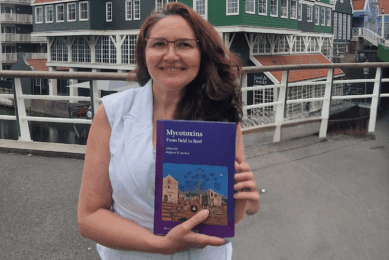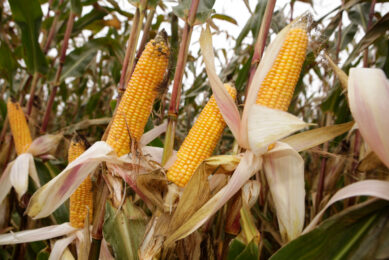Detecting hidden threats to feed safety
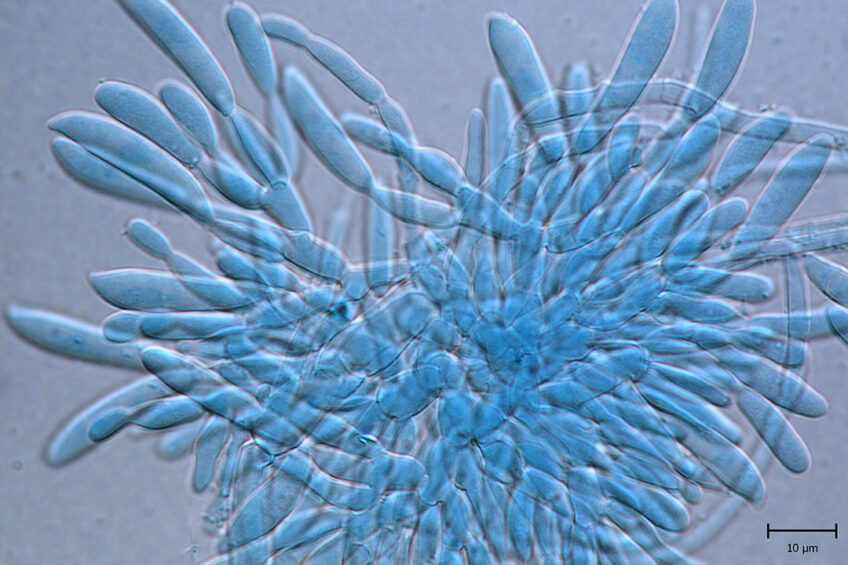
New emerging mycotoxins, lack regulation but their presence in feedstuffs is rising. Masked mycotoxins evade conventional detection. Their impacts on feed and food safety are becoming more understood.
MYCOTOXIN SPECIAL 2023 – read all articles
Fungi are ubiquitous and mycotoxins occur in agricultural commodities all over the world and depending on species and quantity, they can have a severe impact on feed ingredients. Fungal growth and the ability to produce mycotoxins are greatly influenced by a variety of factors related to the fungal species, the crop, as well as climatic, environmental and agrotechnical factors. Furthermore, mould e.g. Fusarium species differ in the spectrum of toxins produced, with different toxigenic potentials existing within one species alone. Based on these facts, it is widely accepted that naturally contaminated feed on the field could contain many different mycotoxins.
While over 1000 fungi-born toxins and metabolites exist, only a handful have legal or recommended maximum levels in most jurisdictions. The term “emerging mycotoxins” is not clearly defined. One of the first papers to use this term, published in 2008, dealt with just a few categories of Fusarium metabolites: fusaproliferin (FP), beauvericin (BEA), enniatins (ENNs), and moniliformin (MON). More recently, emerging mycotoxins were defined as “mycotoxins, which are neither routinely determined nor legislatively regulated; however, the evidence of their incidence is rapidly increasing”. According to this definition, many more fungal metabolites with known, or at least suspected, toxicity would fall in the category of emerging mycotoxins.
Emerging mycotoxins’ impact
New research on the most common emerging mycotoxins in food and feed, indicates that they can make animals more susceptible to disease. A study on the effect of Fusarium-derived metabolites on barrier integrity looked at the toxicological profile of Fusarium-derived metabolites, such as enniatins, beauvericin, apicidin, and aurofusarin. Their effects on the intestinal barrier function of differentiated intestinal porcine epithelial cells (IPEC-J2) were measured over 72h. Transepithelial electrical resistance (TEER), an indicator of gut barrier integrity, was measured at 24h intervals, followed by evaluation of cell viability using neutral red (NR) assay. Enniatins A, A1, B, and B1, apicidin, aurofusarin and beauvericin significantly reduced TEER (Figure 1).
Figure 1 – Effect of apicidin, aurofusarin, beauvericin and enniatins on TEER and viability of differentiated IPEC-J2. TEER was measured after 24, 48 and 72 h. After the final TEER measurement, viability was determined via the NR assay.
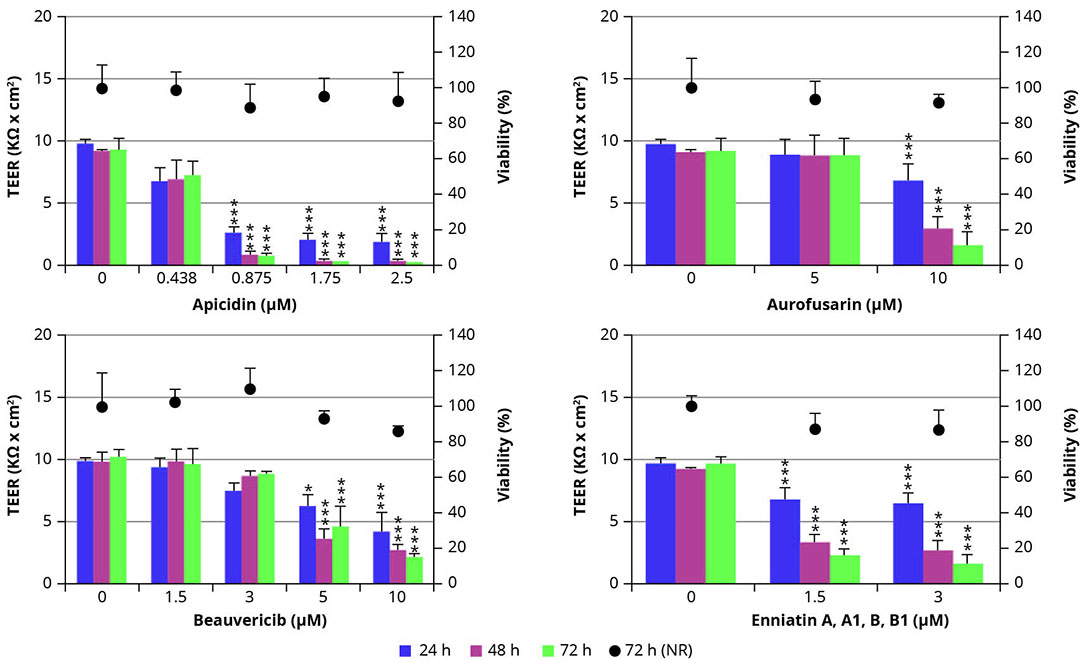
Masked mycotoxins risk management
Masked mycotoxins occur naturally in plants or during processing are and are not immediately detectable by routine analytical methods used for mycotoxin testing. Masked mycotoxins are typically created when mycotoxins bind with plant components or other molecules. When the fungus infects the plant it produces mycotoxins, for example, deoxynivalenol (DON). The defence mechanism of the plant to counteract the toxic effects of this substance is to conjugate a sugar molecule to the mycotoxin, resulting in a new form called a “masked mycotoxin” e.g. DON-3- glucoside, which is no longer toxic for the plant. However, when these masked mycotoxins are ingested or undergo certain conditions, they can be released and become active toxins again. DON-3-glucoside, found in wheat, maize, barley and malt, is a masked form of deoxynivalenol associated with feed refusal and immune suppression.
Figure 2 – Positive samples [%] for metabolites present in more than 10% of tested corn samples (green bar indicates the masked mycotoxin DON-3-Glucoside). Cut off for all metabolites 1 ppb (except for aflatoxins 0.5 ppb).
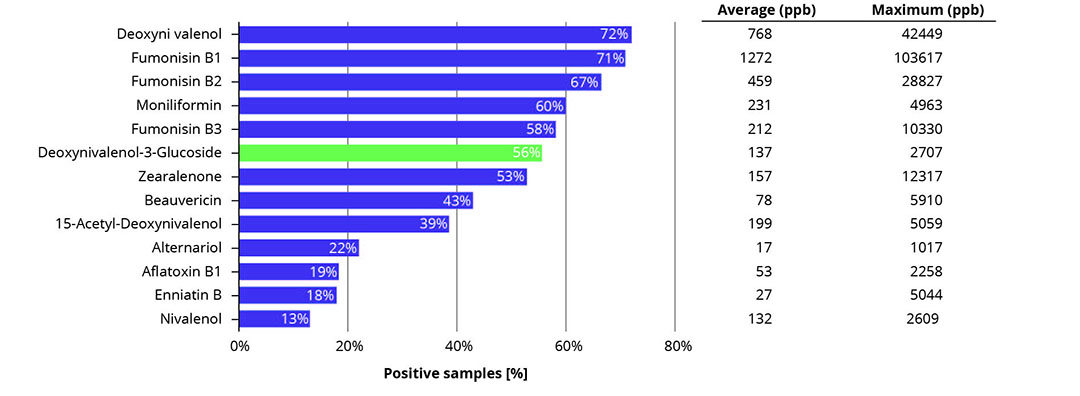
The robust R&D programme of dsm-firmenich helps to provide the animal protein industry with continuous innovations in the field of mycotoxin risk management, such as the LC-MS/MS-based Spectrum Top 50 program that can detect those masked and emerging mycotoxins in raw commodities and finished feed. Looking at the data for corn from 2020-2023, 56% out of 2516 samples tested positive for DON-3-glucoside, at an average level of 137 ppb (Figure 2). It is important to check the feed and food on masked and emerging mycotoxins to get a more comprehensive picture of the toxic load that can impair animal health and performance. Advanced detection methodologies such as LC-MS/MS are useful tools to inform our scientific understanding of mycotoxin research and risk management.
References are available upon request
Join 13,000+ subscribers
Subscribe to our newsletter to stay updated about all the need-to-know content in the dairy sector, two times a week.



